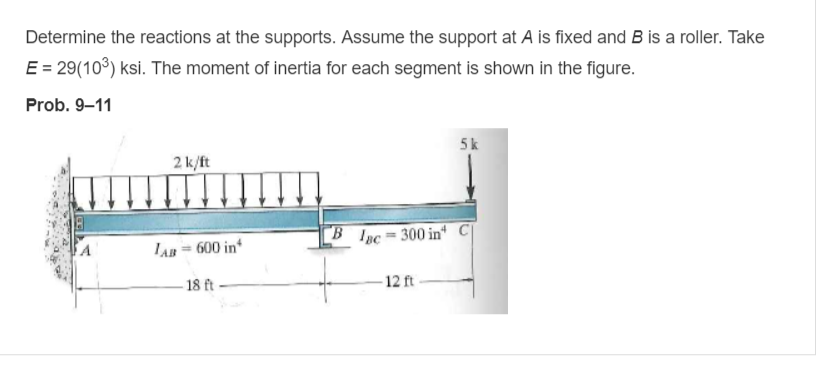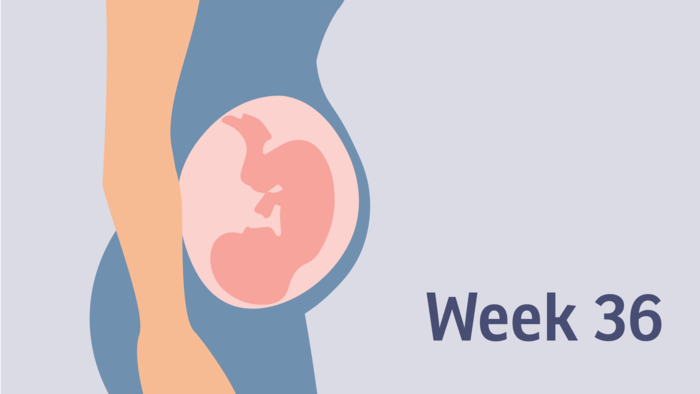Female pelvic floor exercises
Pelvic floor exercises for women
The first step in performing pelvic floor muscle exercises is to identify the correct muscles.
How can I find my pelvic floor muscles?
Method 1 – Stopping the flow
There are several ways which may help you to correctly identify the different parts of your pelvic floor muscles. One way is to try to stop or slow the flow of urine midway through emptying the bladder. Stopping the flow of urine repeatedly on the toilet is not an exercise, but a way of identifying your pelvic floor muscles. This should only be done to identify which muscles are needed for bladder control.
If you can, stop the flow of urine over the toilet for a second or two, then relax and finish emptying without straining. This ‘stop-test’ may help you identify the muscles around the front passage which control the flow of urine. It is not recommended as a regular exercise.
Method 2 – Visualisation
Another method to identify your pelvic floor muscles is to imagine stopping the flow of urine and holding in flatus (wind) at the same time. This can be done lying down, sitting or standing with legs about shoulder width apart.
- Relax the muscles of your thighs, bottom and abdomen (tummy).
- Squeeze in the muscles around the front passage as if trying to stop the flow of urine.
- Squeeze in the muscles around the vagina and suck upwards inside the pelvic.
- Squeeze in the muscles around the back passage as if trying to stop passing wind.
- The muscles around the front and back passages should squeeze up and inside the pelvis.
- Women who are familiar with using tampons can imagine squeezing in the vagina as if squeezing a tampon up higher in the vagina.
- Identify the muscles that contract when you do all these things together. Then relax and loosen them.
Getting the technique right
This is the most important part of the pelvic floor muscle exercises as there is no point doing them if you are not doing them correctly.
Imagine letting go like you would to pass urine or to pass wind. Let your tummy muscles hang loose too. See if you can squeeze in and hold the muscles inside the pelvis while you breathe. Nothing above the belly button should tighten or tense. Some tensing and flattening of the lower part of the tummy wall will happen. This is not a problem, as this part of the tummy works together with the pelvic floor muscles.
Let your tummy muscles hang loose too. See if you can squeeze in and hold the muscles inside the pelvis while you breathe. Nothing above the belly button should tighten or tense. Some tensing and flattening of the lower part of the tummy wall will happen. This is not a problem, as this part of the tummy works together with the pelvic floor muscles.
Try tightening your muscles really gently to feel just the pelvic floor muscles lifting and squeezing in. If you cannot feel your muscles contracting, change your position and try again. For example, if you cannot feel your muscles contracting in a seated position, try lying down or standing up instead.
After a contraction it is important to relax the muscles. This will allow your muscles to recover from the previous contraction and prepare for the next contraction.
It is common to try too hard and have too many outside muscles tighten. This is an internal exercise and correct technique is vital. Doing pelvic floor muscle exercises the wrong way can be bad for you, so please see a health professional if you cannot feel your muscles hold or relax.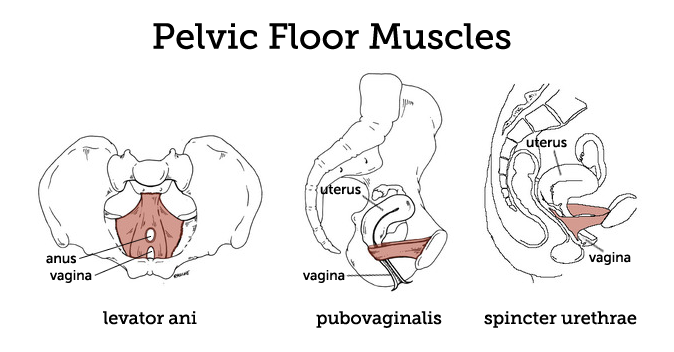
Exercising your pelvic floor muscles
Once you have mastered the art of contracting your pelvic floor muscles correctly, you can try holding the inward squeeze for longer (up to 10 seconds) before relaxing. Make sure you can breathe easily while you squeeze.
If you can do this exercise, repeat it up to 10 times, but only as long as you can do it with perfect technique while breathing quietly and keeping everything above the belly button relaxed. This can be done more often during the day to improve control.
Useful resources for exercising pelvic floor muscles:
- Pelvic Floor Muscle Training for Women
- Pelvic Floor Muscle Exercises for Women (for Aboriginal and Torres Strait Islanders)
- Pelvic Floor Muscle Exercises (Easy English)
When to seek professional help
Seek professional help when you have bladder or bowel control problems with symptoms such as:
- needing to urgently or frequently go to the toilet to pass urine or bowel motions
- accidental leakage of urine, bowel motions or wind
- difficulty emptying your bladder or bowel
- vaginal heaviness or a bulge
- pain in the bladder, bowel or in your back near the pelvic floor area when exercising the pelvic floor or during intercourse
These problems may not necessarily be linked to weak pelvic floor muscles and should be properly assessed.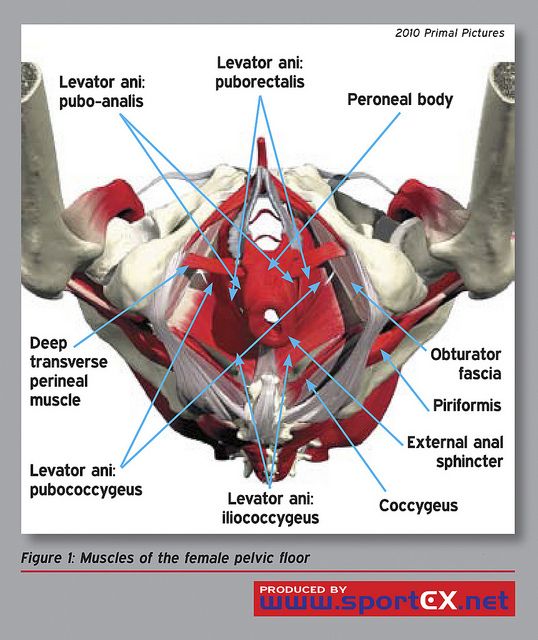
Like all exercises, pelvic floor exercises are most effective when individually tailored and monitored. The exercises described are only a guide and may not help if done incorrectly or if the training is inappropriate.
Incontinence can have many causes and should be individually assessed before starting a pelvic floor muscle training program. Tightening or strengthening pelvic floor muscles may not be the most appropriate treatment so speak to a health professional if you have persistent problems with your bladder or bowel. Visit the Resources page for more information.
Health professionals
Continence and women’s health or pelvic floor physiotherapists specialise in pelvic floor muscle exercises. They can assess your pelvic floor function and tailor an exercise program to meet your specific needs. They can also prescribe other treatment options such as biofeedback and discuss relevant lifestyle factors with you.
For a list of continence and women’s health or pelvic floor physiotherapists, search the Continence Foundation of Australia’s service provider directory or call the National Continence Helpline on 1800 33 00 66.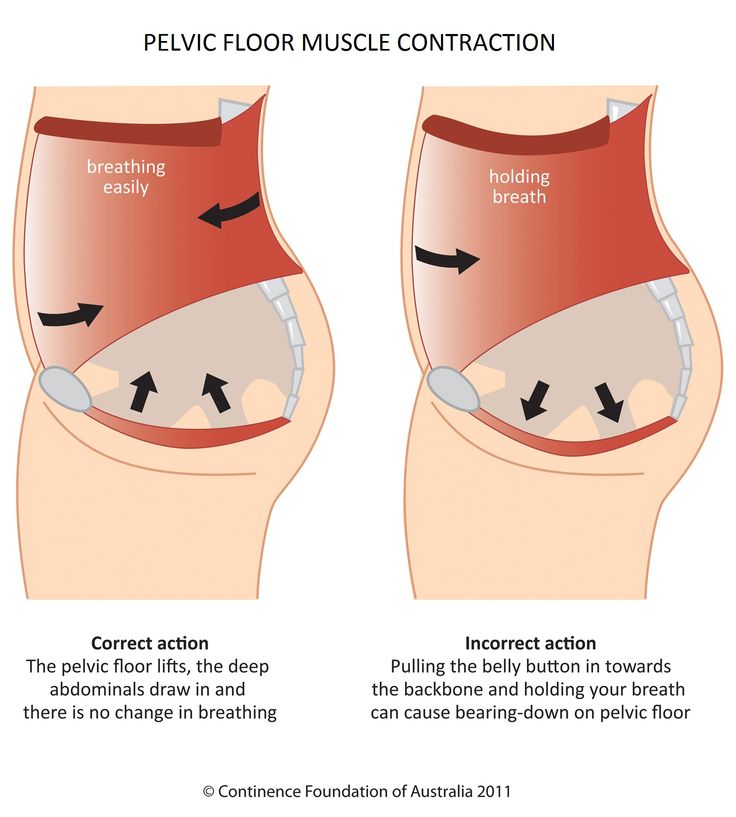
You may also like to see:
- Video: Learn how to do pelvic floor muscle exercises
Pelvic Floor Exercises for Everyone (Yes, Everyone)
If you can’t sneeze, laugh, or cough without leaking a little urine, you’re not alone. Problems with the pelvic floor are common and can happen to anyone (1).
The good news? Incorporating specific exercises (aka pelvic floor muscle training) into your overall fitness routine can help strengthen your pelvic floor muscles, as well as reduce the severity of symptoms of pelvic organ prolapse (2).
Here’s an easy-to-understand guide to what the pelvic floor is, what it does, how to find these muscles, and tips regarding when to see a professional. Plus, it provides five exercises to help strengthen your pelvic floor that you can start doing right away!
The pelvic floor comprises muscles and connective tissues. These soft tissues attach to your pelvis, and more specifically, to the bones at the bottom of the pelvis.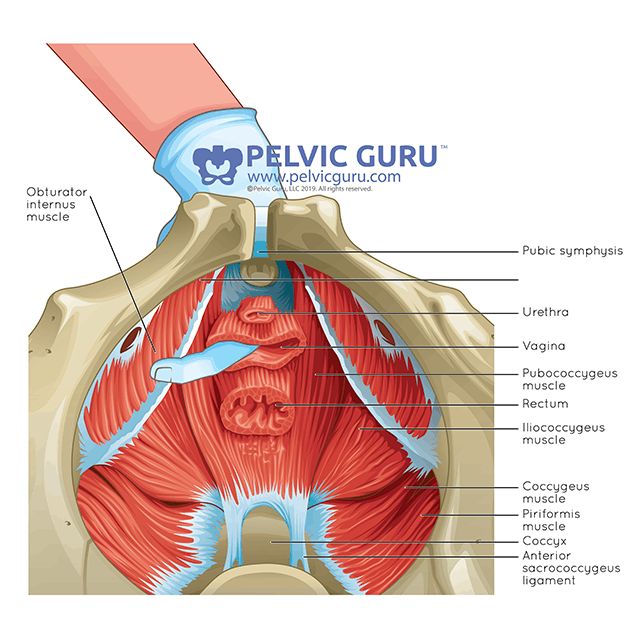
In all people, the pelvic organs include the urethra, bladder, intestines, and rectum. If you have a vagina, the pelvic floor also consists of the uterus, cervix, and vagina (3).
A good way to visualize the pelvic floor and its function, says Marcy Crouch, PT, DPT, WCS, a board certified clinical specialist in women’s health, is to picture these muscles at the bottom of the pelvis like a hammock or basket.
“When the pelvic floor is engaged or contracted, it performs a lifting motion toward your head, which feels like you are trying to stop gas or urine, or pucker your anal opening,” she says.
SummaryThe pelvic floor comprises muscles and connective tissues that attach to the pelvis.
The pelvic floor muscles are critical to daily functions. They support the pelvic organs, including the bladder, urethra, rectum, anus, prostate, uterus, cervix, vagina, and intestines (4).
Pelvic floor muscles also contribute to sexual health and function, including arousal and orgasm (5, 6).
Plus, they help stabilize your hips and trunk, especially when walking and standing.
Pregnancy and vaginal birth can weaken these muscles, causing a host of issues, which range in severity from mild pain and discomfort to pelvic organ prolapse (7, 8).
But it’s not just pregnancy or childbirth that can cause pelvic floor dysfunction. It can also occur with age, menopause, surgery, repeated heavy lifting, prolonged sitting, sexual abuse, or conditions that create pressure on the abdomen, such as excessive weight.
Additionally, certain habits, symptoms, or conditions can contribute to pelvic floor disorders (PFD), such as endometriosis, irritable bowel syndrome, interstitial cystitis, and habitual patterns of avoiding or restricting bowel movements (4).
SummaryPelvic floor muscles support the urethra, bladder, intestines, rectum, and other pelvic organs. If you have a uterus, cervix, and vagina, the pelvic floor also supports these organs.
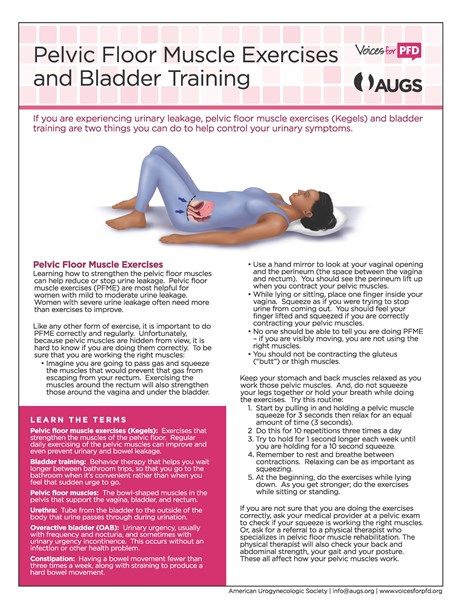
For a lot of people, the concepts of Kegels and the pelvic floor are synonymous with a vagina, and more specifically, pregnancy.
But what you might not know is that people of all genders have these muscles. In people with a penis, the pelvic floor muscles support the bladder and bowel, preventing leakage of stool and urine (9).
They also help with sexual health, including function and sensation.
Common diagnoses of pelvic floor disorders in men include chronic prostatitis, pudendal neuralgia, genitofemoral neuralgia, and hypertonicity (10).
SummaryPeople of all genders have pelvic floor muscles.
One of the simplest ways to find the pelvic floor is to stop or slow urine flow while going to the bathroom. If you can do this successfully at least a few times, you’ve found your pelvic floor.
Another good way to activate the pelvic floor muscles, says Crouch, is this:
- Lie down with your knees bent and feet flat on the floor.
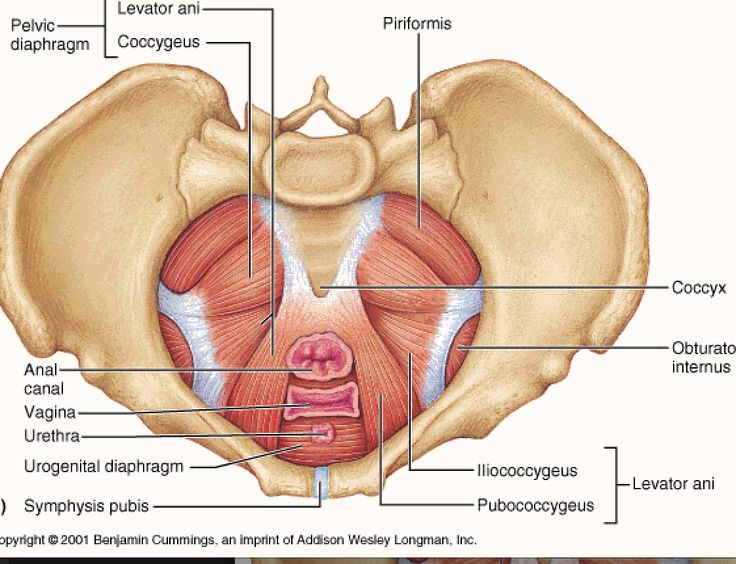 Inhale.
Inhale. - Exhale gently, draw in your lower abdominal muscles, and squeeze in the muscles around the urethra like you’re trying to stop gas or urine. People with a vagina can also focus on lifting or squeezing the muscles around the vagina.
- Hold for 1–2 seconds, then let everything go. You should feel the pelvic floor muscles release and drop.
One way to find the pelvic floor muscles while standing is to imagine you need to pass gas but don’t want to let it out.
If you’re trying to hold it in, there’s a good chance you’ll squeeze your rectum and anus. The muscles you activate are those comprising the pelvic floor, especially if you feel a pulling sensation at your anus.
When engaging the pelvic floor, it’s important to remember that these muscles span the distance across the bottom of your pelvis. So, if you’re contracting only the muscles that control the flow of urine but not the rectal muscles, you aren’t getting a full contraction.
For the most effective contraction, engage both areas — the muscles that would stop gas and urine simultaneously.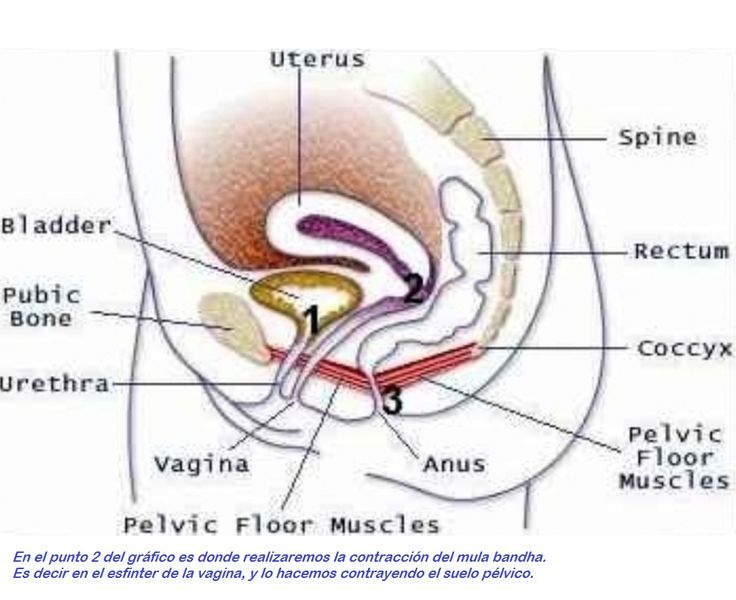 Research has also shown that engaging the transversus abdominis and obliques at the same time may help deepen pelvic floor muscle engagement (11).
Research has also shown that engaging the transversus abdominis and obliques at the same time may help deepen pelvic floor muscle engagement (11).
Likewise, engaging the pelvic floor muscles may contribute to a stronger abdominal contraction (12).
This is especially important to remember when you’re an active individual or looking to increase your core strength for functional purposes.
Still, learning to release or relax the contraction of these muscles is just as important for optimal pelvic floor function. Once you’re able to feel the sensation of contraction in these muscles, check in with yourself occasionally: Are these muscles always turned on, even just a little?
One way to think about it is to imagine your pelvic floor muscles as an elevator. When you’re sitting at your desk or standing and doing dishes, take note of where the elevator has come to a stop. Is it at the bottom floor? At the third floor? Or all the way at the tenth?
Learning to let the elevator rest at the bottom is important, too, as excess tension in these muscles can cause pain.
SummaryThere are several ways to find the pelvic floor muscles, including stopping urine midstream and trying to prevent gas from leaving your body. It’s important to learn how to both contract and relax these muscles.
When the pelvic floor muscles are weak or malfunctioning, they lose the ability to fully support the pelvic organs, causing pelvic floor disorders.
These disorders can include urinary or fecal incontinence, urgency urinary incontinence, overactive bladder, and pelvic organ prolapse, and they might cause symptoms like painful sex (13, 14).
It’s hard to estimate how many people have a pelvic floor disorder, as awareness of the symptoms and conditions remains low. Many people who identify as women assume pelvic floor dysfunction is a normal part of childbirth or aging and therefore don’t seek treatment.
However, it’s estimated that about 1 in 4 women experience pelvic floor disorders, and that number doubles by the time women are over 80 years old. Some research shows that about 50% of women are affected by PFD in their childbearing years (4, 13).
Some research shows that about 50% of women are affected by PFD in their childbearing years (4, 13).
What’s more, researchers expect to see a 70% increase in the number of women impacted by PFD by the year 2050, due to health trends like increasing body mass index and chronic constipation (14).
Furthermore, people with a penis don’t often think they can be impacted by PFD, but the prevalence of such conditions in men is estimated to be about 16% (4).
Symptoms of pelvic floor dysfunction include:
- pelvic pressure or fullness
- the frequent urge to urinate or painful urination
- urinary leakage
- urinary incontinence
- lower back pain
- constipation, difficulties with bowel movements, or bowel leakage
- difficulty emptying the bladder
- pain with sexual intercourse
- pain in the pelvic region or genitals
- pelvic muscle spasms
Fortunately, there are nonsurgical ways to treat PFD and find relief from pain or embarrassment.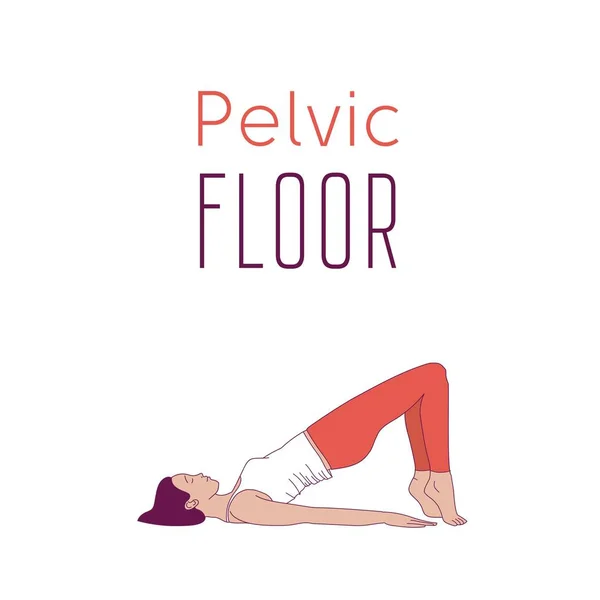 Often a consultation with a pelvic floor physical therapist is a good place to start.
Often a consultation with a pelvic floor physical therapist is a good place to start.
SummaryPelvic floor disorders (PFD) are more common than people realize, but they’re also more treatable than people realize.
Chronic issues with the pelvic floor can be caused by both hypotonic muscles (pelvic muscles that are too lax or weak) or hypertonic muscles (pelvic floor muscles that are too tight or overactive) (15, 16, 17).
Sometimes, these conditions are referred to as relaxing pelvic floor dysfunction and nonrelaxing pelvic floor dysfunction.
Pelvic floor dysfunction can also happen on a continuum, with both hypotonic and hypertonic issues. This often comes as a surprise to people who assume their pelvic floor issues are caused by inactive muscles.
But here’s the deal: Not everyone should be doing Kegels.
The pelvic floor comprises skeletal muscle. “That means it can have the same kind of injuries, weakness, or trauma like any other muscle in your body,” says Crouch. “It can also become “tight” or chronically contracted — think a muscle spasm in your calf.”
“It can also become “tight” or chronically contracted — think a muscle spasm in your calf.”
If the muscles are in spasm, contracted, or too tight, Crouch says doing Kegels can worsen the problem — pain, leaking, constipation, or sexual dysfunction. In other words, if your pelvic floor is hypertonic, it’s best to avoid Kegels until you consult a pelvic floor physical therapist.
SummaryPelvic floor muscles can be hypotonic (too weak or lax) or hypertonic (too tight).
Like other muscles in your body, the pelvic floor operates best when the muscles are strong and able to release fully after a full contraction. Strengthening the pelvic floor allows you to better support the bladder, bowels, and uterus (18).
Plus, it can help with bladder and bowel control.
Researchers have also found that improved pelvic floor function improves quality of life (19).
If you have pelvic floor prolapse, strengthening the pelvic floor muscles likewise helps reduce the severity of symptoms, including urinary leakage, incontinence, pelvic pressure, and lower back pain, among others (7).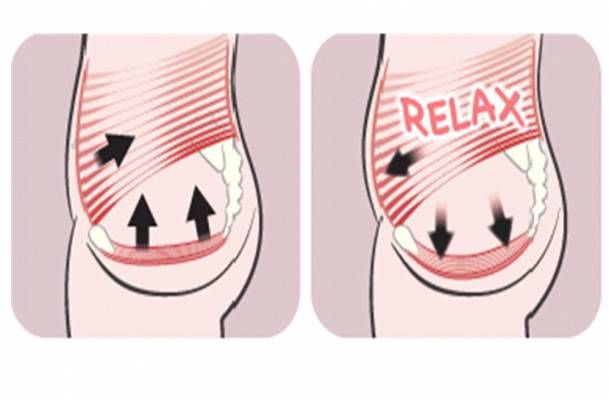
A pelvic floor strengthening program could likewise lead to better sex (5).
Some research supports the connection between male sexual function and pelvic floor function. Specifically, researchers cite how pelvic floor physical therapy can potentially improve erectile dysfunction and ejaculation problems (20).
Moreover, regularly squeezing or contracting the pelvic floor muscles may boost sexual sensation and sexual function for some people with a vagina (21).
Finally, the American Urological Association recommends pelvic floor muscle training as part of a treatment plan for overactive bladder (22).
The goal of this therapy is to inhibit involuntary bladder contractions and decrease incontinence.
SummaryStrengthening the pelvic floor muscles can reduce incontinence, improve sexual health, decrease symptoms of pelvic floor prolapse, and help treat overactive bladder.
You can activate the pelvic floor anytime, anywhere.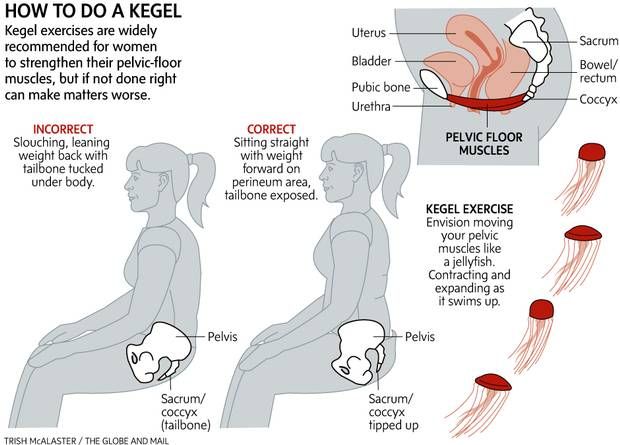 But it’s also beneficial to incorporate specific exercises that strengthen and target the pelvic floor muscles.
But it’s also beneficial to incorporate specific exercises that strengthen and target the pelvic floor muscles.
One way to design a program is to categorize the exercises for those who have hypotonic pelvic floor muscles versus those who have hypertonic pelvic floor muscles.
According to Crouch, hypotonic means you have low tone pelvic floor issues and need to strengthen and improve endurance and power.
Exercises for hypotonic pelvic floor muscles
To target hypotonic pelvic floor issues, Crouch recommends these 3 exercises:
Quick flick Kegels
Crouch says the quick flick Kegel requires quick contractions of your pelvic floor to help activate the muscles faster and stronger to stop leaks upon sneezing or coughing.
- Begin by lying on the floor with your knees bent and feet flat on the floor. As this exercise becomes easier, try sitting or standing while performing it.
- Find your pelvic floor muscles using the tips described above.

- Exhale, pull your navel to your spine, and quickly contract and release your pelvic floor muscles. Aim to contract for 1 second before releasing.
- Maintain steady breathing throughout.
- Repeat the quick flick 10 times, then rest for 10 seconds. Do 2–3 sets.
Heel slides
Heel slides encourage pelvic floor contractions while targeting the deep abdominal muscles.
- Begin by lying on the floor with your knees bent and pelvis in a neutral position.
- Inhale into the rib cage, then exhale through the mouth, letting your ribs naturally compress.
- Draw your pelvic floor up, lock in your core, and slide your right heel away from you. Only go as far as you can without losing your connection to your deep core.
- Find the bottom position, then inhale and bring your leg back to starting position.
- Repeat.
- Do 10 slides on each side before changing to the other leg.
Marches (also called toe taps)
Like heel slides, the marching exercise increases core stability and encourages pelvic floor contractions.
- Begin by lying on the floor with your knees bent and pelvis in a neutral position.
- Inhale into your rib cage, then exhale through your mouth, letting your ribs naturally compress.
- Draw your pelvic floor up and lock in your core.
- Slowly lift one leg up to a tabletop position.
- Slowly lower this leg to the starting position.
- Repeat the movement alternating legs. You should not feel any pain in your lower back. It’s important that your deep core stays engaged throughout the entire exercise.
- Alternate legs for 12–20 times total.
Exercises for hypertonic pelvic floor muscles
Hypertonic exercises may provide some relaxation and lengthening for someone who has a short or tight pelvic floor.
Crouch says the goal is to lengthen and release the hypertonic muscles, so contractions are more effective and the muscles can work effectively. “We have to make sure the muscle can do what we need it to do, so lengthening is just as important as strengthening,” she says.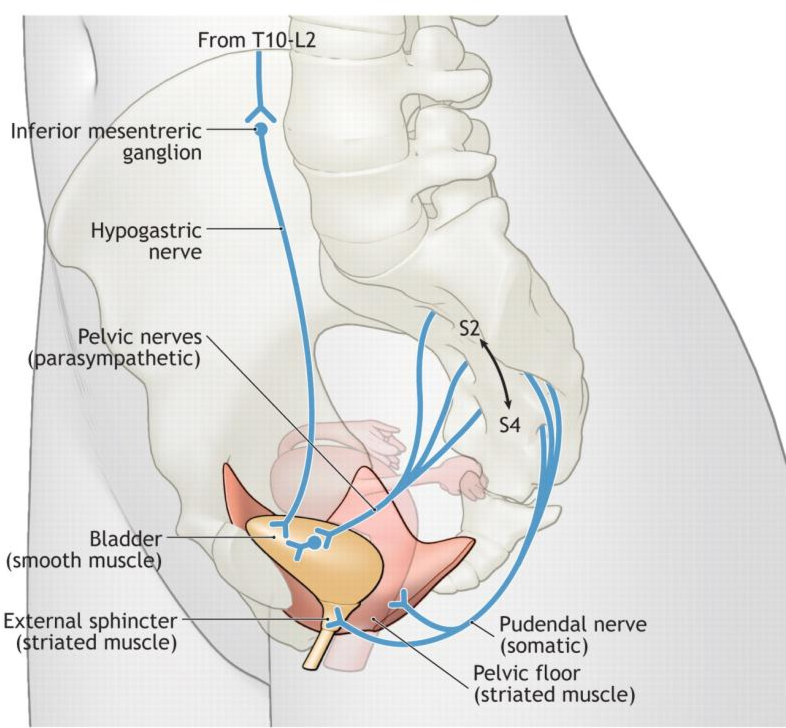
Here are 2 exercises that she recommends:
Happy Baby Pose
The Happy Baby Pose is a great addition to a pelvic floor routine when stretching and releasing are the goal.
- Begin by lying on the floor with your knees bent.
- Bring your knees toward your belly at a 90-degree angle, with the soles of your feet facing up.
- Grab and hold the outside or inside of your feet.
- Open your knees until they’re slightly wider than your torso. Then, bring your feet up toward your armpits. Make sure your ankles are over your knees.
- Flex your heels and push your feet into your hands. You can stay in this position for several breaths or gently rock from side to side.
Diaphragmatic breathing
Diaphragmatic breathing encourages the functional relationship between the diaphragm and pelvic floor. It’s also an excellent exercise for reducing stress. (23)
- Begin by lying flat on the floor on a yoga or exercise mat. You can also perform the exercise in a seated position.
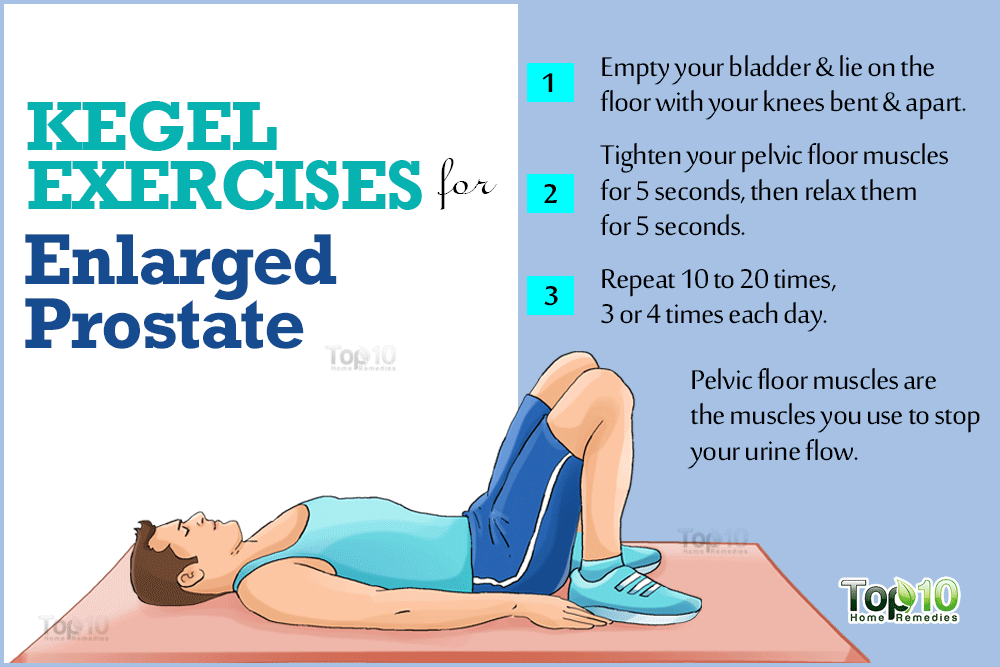
- Do a few seconds of progressive relaxation. Focus on releasing the tension in your body.
- Once relaxed, put one hand on your stomach and the other on your chest.
- Inhale through your nose to expand your stomach — your chest should stay relatively still. Then, breathe in for 2–3 seconds and exhale slowly.
- Repeat several times while keeping one hand on the chest and one on the stomach.
Crouch also recommends adding lunges and squats to a pelvic floor routine. “Everyday exercise like lunging and Swiss ball squats can be great ways to add in pelvic floor strengthening,” she says.
When performing these moves, Crouch says to think about contracting the pelvic floor before you go down into the lunge or squat, re-engaging at the bottom, and then contracting again as you drive up to standing.
SummaryQuick flick Kegels, marches, heel slides, Happy Baby Pose, and diaphragmatic breathing are five exercises that help relax and condition the pelvic floor muscles.
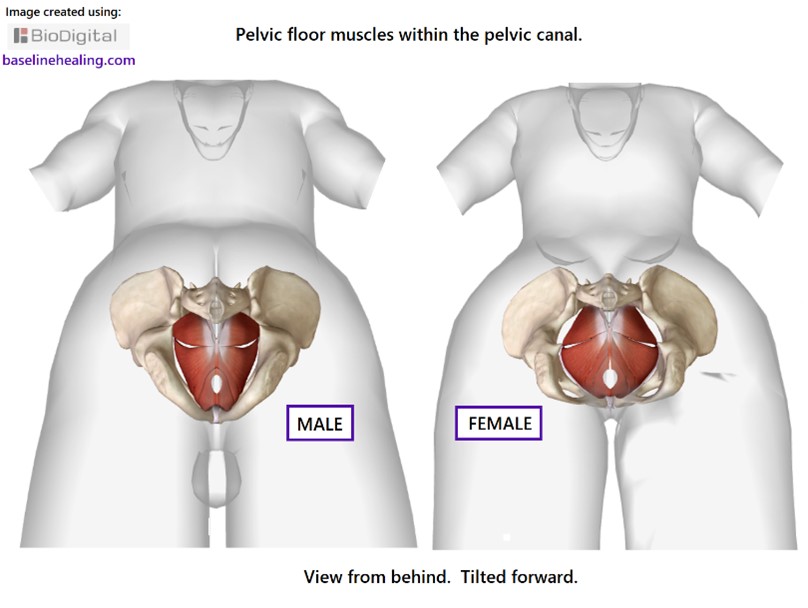
For a lot of people, adding pelvic floor exercises to their daily routine is a simple way to strengthen these muscles and maintain overall pelvic health.
But for many others, seeking help from a doctor or a physical therapist trained in pelvic floor issues is a necessary intervention. This is especially true if you’re having bowel or bladder control problems.
Here are some signs to watch for that may indicate it’s time to see a professional (24).
- leaking urine or stool
- problems with having a bowel movement
- pressure or discomfort in the pelvis
- seeing or feeling a bulge protruding out of the vagina or anus
- pain while urinating
- incontinence
- difficulty emptying the bladder or bowels completely
Remember, it’s always OK to call your doctor, even if you feel your symptoms are not that severe. Finding the right treatment for your situation can help you feel better and prevent any further damage to the pelvic floor area.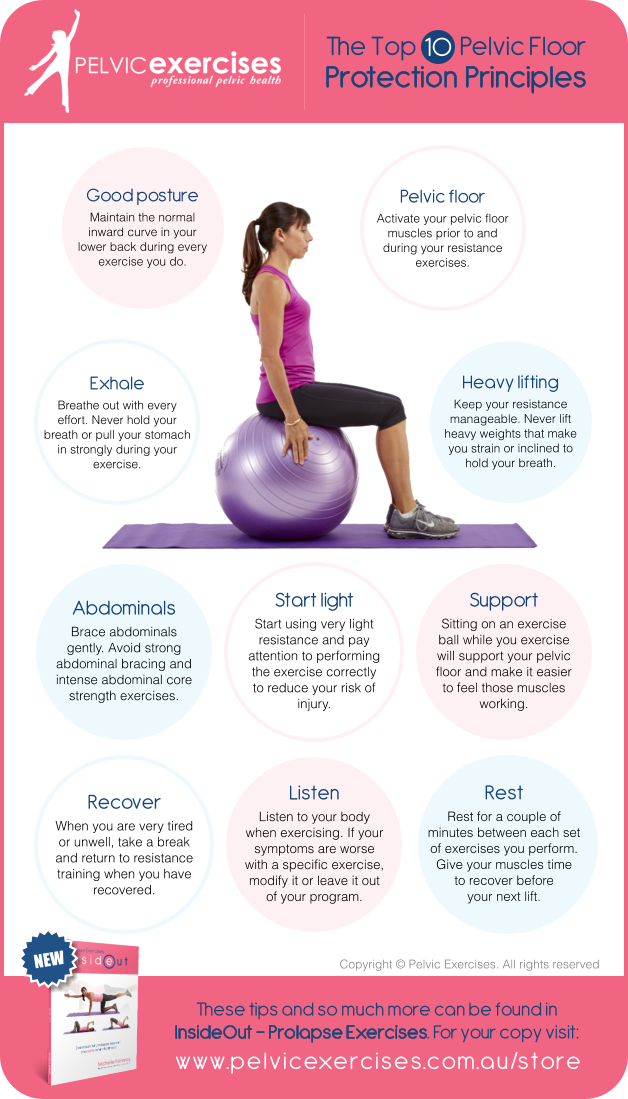
SummaryCall your doctor if you’re experiencing bladder control issues, pain or discomfort, or symptoms related to pelvic floor prolapse.
Adding pelvic floor strengthening exercises to your day is an excellent way to give these muscles a workout and boost your overall health. Remember to focus on form and function and engage the muscles each time you do an exercise.
If you’re new to these exercises or you would like some extra help, consider consulting a pelvic floor physical therapist. They can recommend exercises specific and ensure you’re doing them correctly.
Finally, if your symptoms interfere with daily activities or seem to be getting worse, make an appointment with your doctor.
Women's Pelvic Floor Strengthening Exercises
This fact sheet has been compiled to educate patients about pelvic floor strengthening exercises.
More than 50% of women who have given birth have problems with urination, and at an older age, prolapse of the uterus (prolapse), which can be caused by weakness of the pelvic floor muscles.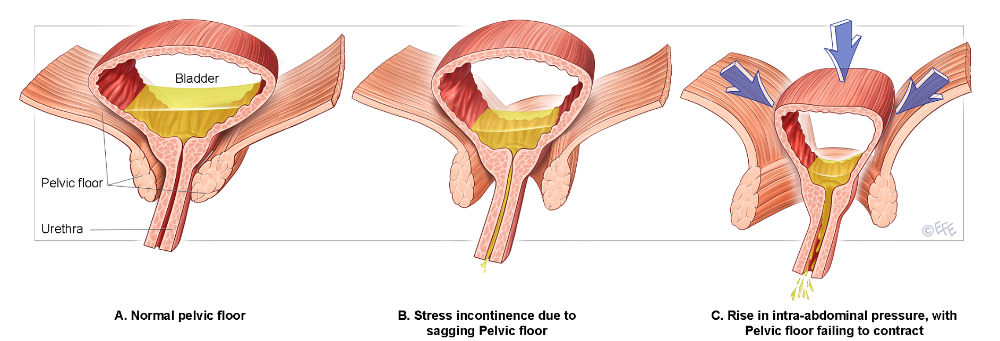
Strong pelvic floor muscles help improve bladder and sexual function, as well as maintaining internal organs in a normal anatomical position. Pelvic floor muscle problems can be caused by pregnancy, childbirth, chronic constipation, being overweight, smoking, menopause, and neurological problems. nine0003
Symptoms of pelvic floor weakness may include incontinence when coughing and sneezing, frequent urination and the need to urinate at night, vaginal pain, pain during sex.
To prevent and alleviate urinary incontinence and organ prolapse, it is very important to learn how to contract the pelvic floor muscles correctly.
The pelvic floor muscles are located in the pelvic floor area between the pubic bone and the coccyx. Their function is to maintain the correct position of the organs (uterus, bladder, intestines) inside the pelvis, as well as to keep the urethra and anus closed to prevent involuntary leakage of contents, and to relax them during emptying. nine0003
Like all other muscles in the body, the pelvic floor muscles also need special training.
Manual
Get into a comfortable sitting or lying position. Try to tighten your pelvic floor muscles as if you are trying to interrupt the flow of urine or intestinal gases by pulling the muscles up.
You may feel tension when the muscles contract. Do not hold your breath, take a deep breath through your nose and slowly exhale through your mouth. At the same time, the abdominal muscles can also tense up, this is normal. nine0003
Try to keep the muscles of the buttocks and legs relaxed. After each contraction of the pelvic floor muscles, try to completely relax these muscles.
Three basic ways to control the correct contraction of the pelvic floor muscles:
- Observe the perineum through a mirror and tighten the pelvic floor muscles. Watch to see if the vagina moves inward in the opposite direction from the mirror. If you see the movement of the vagina towards the mirror, stop immediately and seek help from a physical therapist who specializes in training the muscles of the pelvic floor.
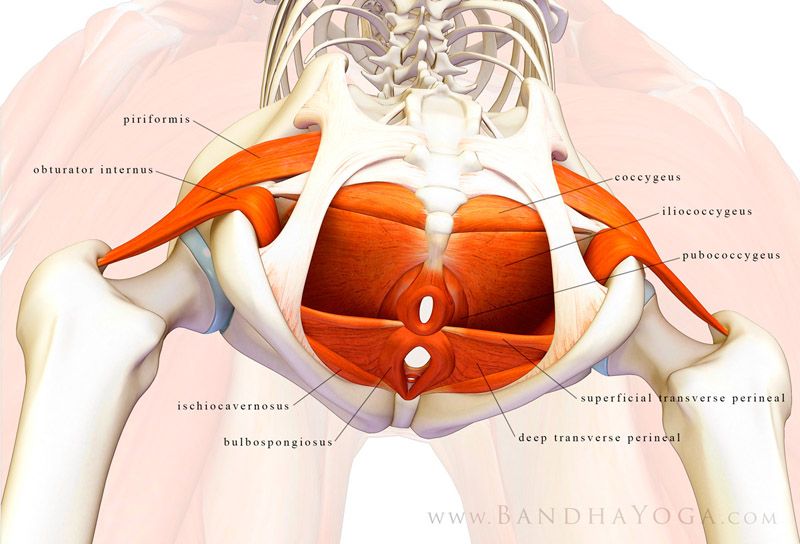 nine0032
nine0032 - Place your thumb or index finger into your vagina. As your pelvic floor muscles contract, you should feel your vagina tighten around your finger.
- Contract your pelvic floor muscles during sex, asking your partner if they feel pressure.
How to Do Pelvic Floor Exercises
- Contract your pelvic floor muscles and try to hold that contraction for a count of seconds, and then relax those muscles for the same number of seconds. For how many seconds can you maintain muscle tension? How many reps can you do? nine0032
- Alternately contract the pelvic floor muscles for 1 second and then relax them also for 1 second. How many of these short repetitions can you do before you feel tired in the muscles? Always relax your pelvic floor muscles before each new contraction.
Your goal is to do 10 long contractions while holding the muscle tension for 10 seconds; each contraction should be alternated with a 10 second relaxation.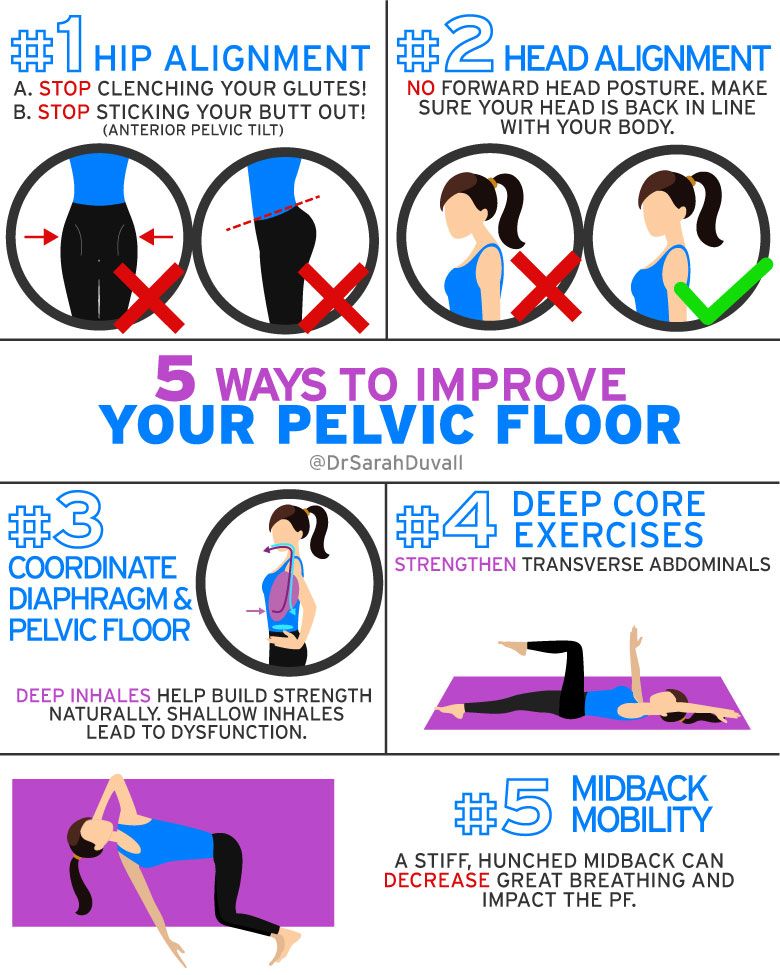 Then do 10 short contractions; each contraction should alternate with a short relaxation. nine0016
Then do 10 short contractions; each contraction should alternate with a short relaxation. nine0016
You can start with a shorter duration and fewer repetitions. Do exercises at least 3 times a day. At first, the exercises are easier to perform in a sitting or lying position. You should feel the results in 3-5 months. Subsequently, to maintain the result of the exercise, you can do it once a day. As your muscles strengthen, try to do the exercises in other positions as well (for example, lying on your side, while resting on your knees, standing, while moving). nine0003
Try to tense your pelvic floor muscles before coughing, sneezing, lifting weights, laughing.
Avoid carbonated or caffeinated drinks to prevent constipation. Drink at least 1.5 liters of water per day. When you have a bowel movement, place your feet on a small footrest to squat as if (this makes it easier to have a bowel movement). When you have a bowel movement during constipation, pressure on the pelvic floor muscles increases.
Eat healthy and be physically active (move at least 150 minutes per week). nine0003
Try to make pelvic floor muscle training your daily routine, so as not to forget about it, you can set a reminder on your phone. Do these exercises while waiting for public transport or in line at the grocery store.
ATTENTION! Interruption of the stream of urine during urination is allowed only as a control exercise 3 months after you start doing the exercises. This should not be done every time you urinate, as this can interfere with normal bladder emptying. nine0016
If you experience pain or problems while exercising your pelvic floor muscles, ask for help from a physiotherapist who specializes in pelvic floor exercises.
ITK963
The information material was approved by the Health Care Quality Committee of East-Tallinn Central Hospital on 10/14/2020 (minutes no. 10-20).
Pelvic Floor (Kegel) Exercises for Women
This information will help you learn what pelvic floor (Kegel) exercises are and how to do them.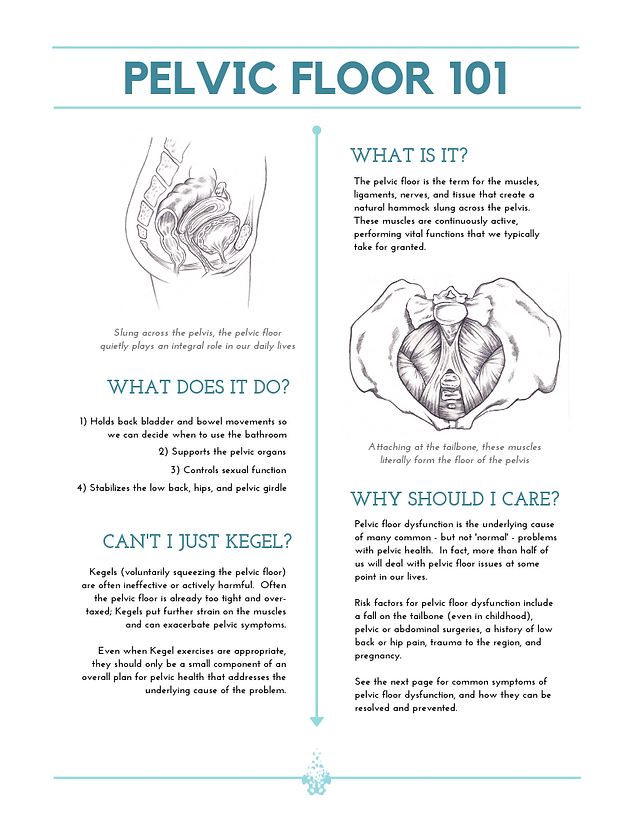 nine0003 back to top of page
nine0003 back to top of page
About Kegel Exercises
The main purpose of Kegel exercises is to help you strengthen your pelvic floor muscles. These muscles support your uterus, bladder, and intestines (see Figure 1). They are also called pelvic organs.
Figure 1. Pelvic floor muscles and pelvic organs
How Kegel exercises can help you
Kegel exercises can help you:
- Control or prevent urinary incontinence. Incontinence is the leakage of urine or feces that you cannot control. nine0032
- Support the pelvic organs. This will help reduce incontinence and soreness.
- Improve pelvic floor muscle coordination. Exercise helps make muscles stronger and more flexible. This is important if you experience pain or discomfort during intercourse or during a pelvic exam.
Kegel exercises can also be beneficial for sexual health and the ability to experience sexual satisfaction because they:
- improve blood circulation in the vagina and pelvic floor muscles, nine0032
- facilitate the achievement of orgasm;
- increase the production of vaginal lubrication (moisturizing the vagina).
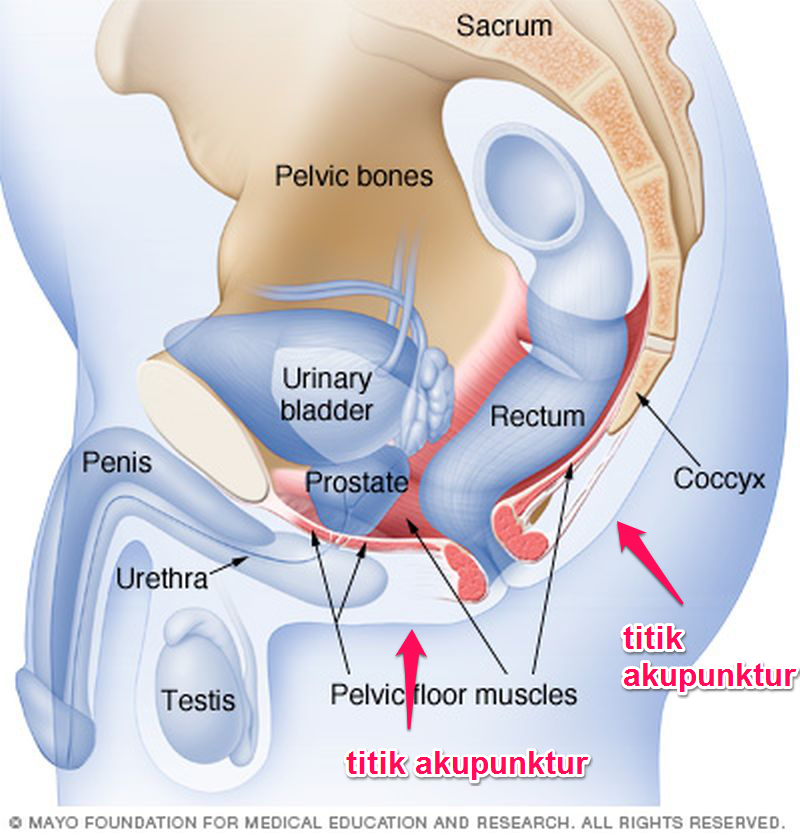
How to Identify Your Pelvic Floor Muscles
When doing Kegel exercises, it is important to identify your pelvic floor muscles to make sure you are working with the correct muscles.
To determine the pelvic floor muscles, do the following:
- imagine you are urinating. Tighten the muscles that you use to interrupt the flow of urine while urinating. These are the pelvic floor muscles. nine0086
- Do not stop the flow of urine while urinating. This may lead to incomplete emptying of the bladder and also increases the risk of urinary tract infection (UTI).
How to Tell if You're Using the Wrong Muscles
When contracting your pelvic floor muscles, you don't need to use your stomach, legs, or buttocks.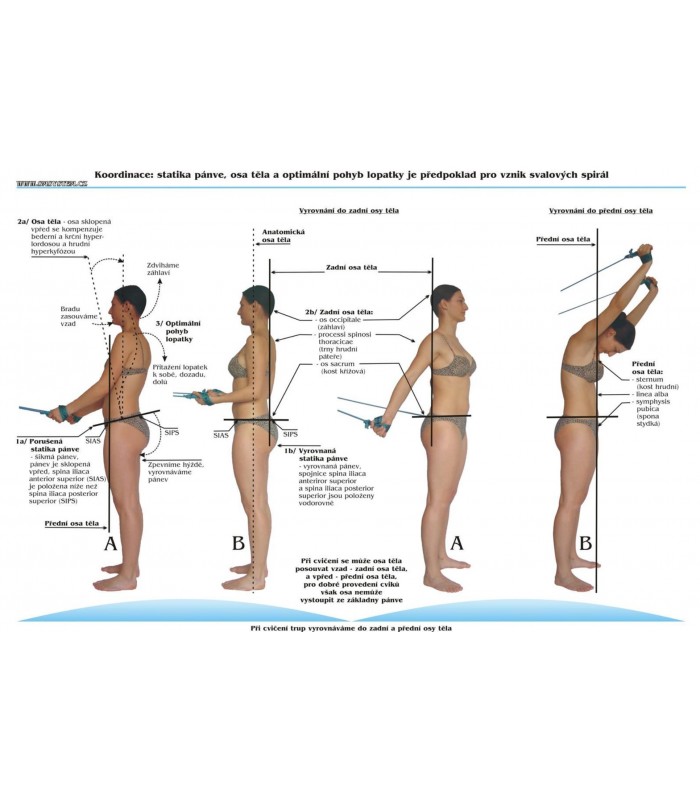
- To find out if the muscles in your legs or buttocks are also contracting, you can place one hand under your buttocks or on the inside of your upper leg. Tighten your pelvic floor muscles. If you feel movement in your leg or buttocks, then you are using the wrong muscles.
- If you are sitting in a chair, then when doing Kegel exercises, your body should not rise from the chair. If you feel that your body is lifting, then you are using the muscles of the buttocks. nine0032
How to do Kegel exercises
Get into a comfortable position before starting
Get into a comfortable position before starting Kegel exercises so that your body is relaxed. Most people prefer to do Kegel exercises while lying in bed or sitting in a chair. They can be done in any position convenient for you.
Once you become familiar with the exercises, you can do them in any position and anywhere, such as standing somewhere and waiting in line, which can help you do them more often.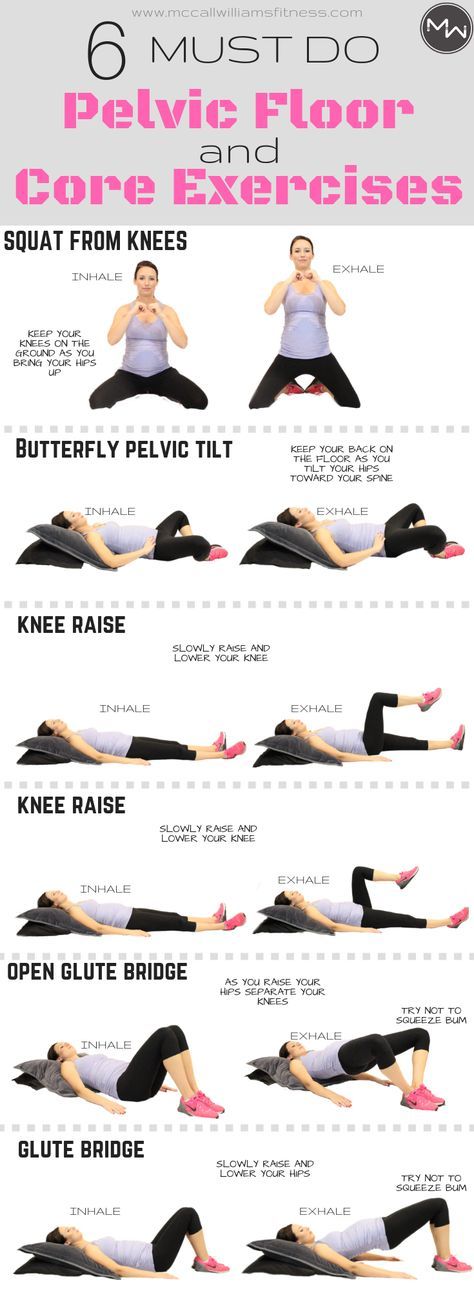 nine0003
nine0003
Steps for performing Kegel exercises
- Inhale deeply through your nose to contract your abdominal muscles and fill with air. During inhalation, the pelvic floor muscles should be relaxed.
- Exhale slowly through pursed lips, as if you were blowing through a straw. Do this by slightly tensing your pelvic floor muscles.
- The pelvic floor muscles should be in a tense state for 3-6 seconds during exhalation. This is called a cut. nine0032
- Inhale again and stop muscle contraction. This will allow the muscles to relax.
- Relax your pelvic floor muscles completely for 6-10 seconds. It is very important to completely relax the muscles between each contraction.
and do not hold your breath while doing Kegel exercises. If you feel like you are holding your breath, count out loud while doing Kegel exercises.
How often to do Kegel exercises
Do this exercise for 10 repetitions per session. For best results, do 2-3 sessions of Kegel exercises daily.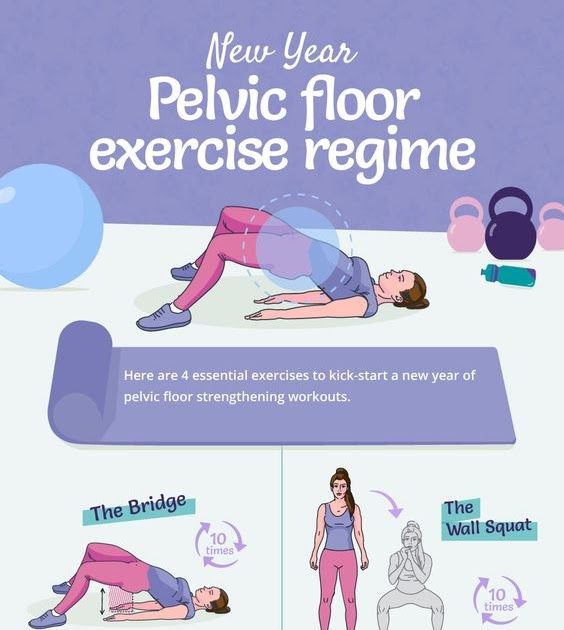 Sessions are best done at regular intervals throughout the day. nine0003
Sessions are best done at regular intervals throughout the day. nine0003
When to increase the duration of Kegel exercises
You can increase the duration of Kegel exercises if:
- pelvic floor muscles do not get tired after their contraction for 3-6 seconds;
- pelvic floor muscles do not get tired after doing 10 Kegel exercises in a row.
In this case, try contracting the muscles for 6-10 seconds. Then completely relax the muscles for 10 seconds. Be sure to keep breathing as the muscles contract. nine0003
Try to achieve the goal of holding a strong contraction for 10 seconds 10 times in a row.
What to do if you experience pain after Kegel exercises
Kegel exercises should not hurt. If you experience pain during or after Kegel exercises, stop exercising immediately and call your health care provider. You may not be doing the exercises correctly or they are not suitable for you.
back to top of page nine0076 Getting Sexual Health and Intimacy Information from MSK If you need more information about sexual health and intimate life, talk to your health care provider.







